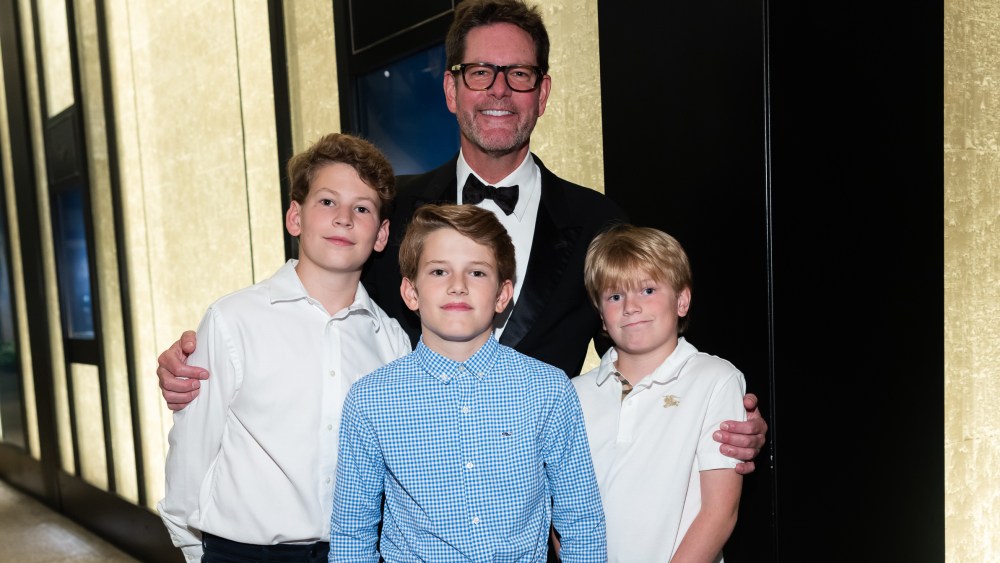Before the turkey comes out of the oven and the Black Friday doorbusters are set, some of the U.S.’ biggest retailers will turn in their third-quarter earnings reports.
Results due from mass merchants Walmart Inc. and Target Corp., specialty chains Gap Inc. and Abercrombie & Fitch & Co. and more, will be the last snapshot of the consumer economy headed into retail’s make-or-break season.
Already some of the industry’s biggest brands have released results for what is traditionally retail’s fiscal third quarter.
So far it’s Coach parent Tapestry Inc. (with sales up 13.1 percent) and Ralph Lauren Inc. (up 16.5 percent) that really shined in the most recent quarter.
That makes sense both because those companies are on multiyear journeys to sharpen their brand images and because they play into the strong side of what economists have called the “K economy.”
It’s a bit of short hand for the economic divergence between the affluent, who continue to see their fortunes increase, while everyone else lower down the income scale loses out.
It’s a divide that has played prominently in surveys of consumer sentiment, which have shown lower-end shoppers becoming more cautious.
The Conference Board, keeper of the Consumer Confidence Index, said the Expectations half of the index declined by 2.9 points to 71.5 last month, an especially low reading as a score under 80 has historically signaled a recession ahead.
“By income, confidence fell for consumers making less than $75,000 a year, but improved for most of the income groups making more than $75,000, with the largest increase among those earning over $200,000,” the Conference Board said. “Younger consumers and consumers earning over $75,000 have been the most optimistic overall.”
The growing differences between the haves and have-nots is important in explaining which retailers are on the rise now and which ones will win in the future — and just where the economy and the country is headed.
“The affluent are making up 60 percent of GDP now, which was 30 percent before COVID[-19],” said Antony Karabus, a retail strategic adviser. “The balance, which is the vast majority of Americans, have been living paycheck to paycheck. So when you look at Tapestry or Ralph Lauren’s outstanding results, you realize the reason why.
“The people that are buying their stuff are people with discretionary income,” he said. “And what they are looking for is unique designs, high-quality retailers with values and where they can trust what they’re buying.”
Likewise, the retailers that are expected to lead in third-quarter results in the weeks ahead are the ones playing well into the downward trending part of the K economy, including the massive Walmart Inc., which expects to produce adjusted profits of $4.8 billion for the quarter, and off-price giant TJX Cos. Inc.
Karabus said the companies that are the “sharpest,” including Walmart and TJX, but also Costco and Burlington, “are attracting both the people who don’t have a lot of wiggle room financially [and] the affluent who are saying, ‘I want to save on basics and commodities, and I’ll spend extra on the uniqueness of high-value stuff like Ralph or Tapestry or Hermès or whatever the case is.”
While the stock market is current near its high — despite questions around tariffs — investors are particularly rewarding the ability to sell into both sides of the K economy.
Karabus pointed to the price-to-earnings ratios as a guide.
Walmart’s PE ratio, for instance, sits at 38, and TJX is at 33.
“Those are better than Google,” Karabus said. “The investors are saying, ‘We have faith that those guys are going to always be winners because they have sharp value, they have what consumers want, and they allow you to live better. And they have brands that you can trust and they have locations that are unbelievable. I’m going to make my bets on them.’”
Being in the right part of the market certainly helps make for a good performance — but the real trick seems to be getting there in the first place and being ready to connect with shoppers.
Michael Prendergast, managing director in Alvarez & Marsal’s consumer and retail group, said it’s “not really surprising” that companies like Ralph Lauren, Tapestry, Walmart and TJX are doing so well.
“They’ve kind of doubled down on their success attributes and really gone after those and it’s working,” Prendergast said. “These companies are in a position of strength because they’ve put themselves in a position of strength.”
He pointed to Ralph, which under chief executive officer Patrice Louvet has been steadily refining its brand and moving its image upscale.
“They’re a terrific template for success,” Prendergast said. “They made a long-term decision strategically going back five years or so to clean up their distribution, refocus on design and products and refocus and double down on marketing. It’s taken a bit to get there. They had to take a couple steps back to get quite a few steps forward, and I think incrementally they’ve been doing better and better and better.
“This season specifically, it’s like an exponential result where product is great, business is great, the marketing is fantastic,” he said
Likewise, TJX — parent to the massive TJ Maxx and Marshalls off-price businesses — has stuck to what works well for them, strengthened that and picked up share from moderate department stores, like Kohl’s Corp.
“They’ve just done an amazing job of exponentially increasing their revenue and profit and their presence, their size is absolutely remarkable,” Prendergast said of TJX.
“When you look at the tens of billions of dollars that they’re doing, it’s really a testament to a very long-term approach,” he said. “Their strategy has not changed in 25 years. It’s the exact same strategy. They’ve just gotten so good at it and continued to accelerate their diligence and strength internally.”
To win, or catch up, it seems like everybody else is going to have to figure out where they really connect with consumers and double or triple down.


